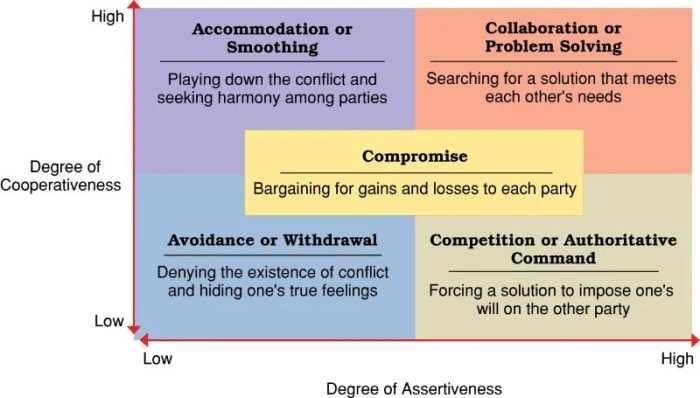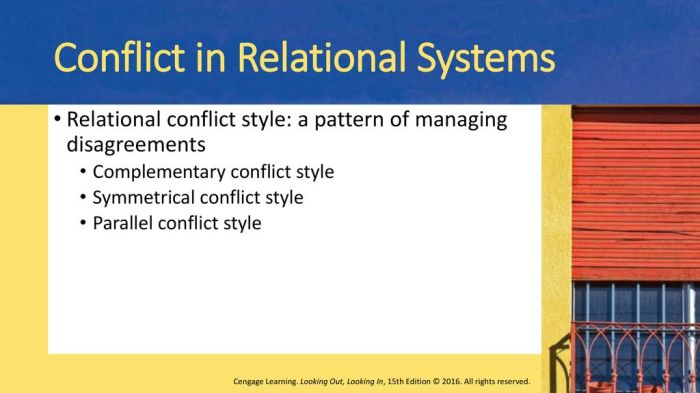Complementary and symmetrical conflict styles have been shown to produce distinct outcomes in interpersonal interactions. Understanding the characteristics, benefits, and challenges associated with each style empowers individuals to navigate conflicts effectively.
This comprehensive analysis delves into the complexities of these conflict styles, exploring their impact on communication, relationships, and overall conflict resolution.
Complementary and Symmetrical Conflict Styles: Complementary And Symmetrical Conflict Styles Have Been Shown To Produce

Conflict styles refer to the different approaches individuals adopt when faced with conflicts or disagreements. Complementary and symmetrical conflict styles represent two distinct patterns of behavior that can shape the dynamics of conflict situations.
Complementary Conflict Styles
Complementary conflict styles are characterized by a reciprocal relationship between individuals involved in a conflict. One person tends to adopt a dominant or assertive stance, while the other assumes a submissive or accommodating role. This dynamic often arises from differences in power, status, or personality traits.
- Benefits:Complementary conflict styles can facilitate quick decision-making, maintain harmony, and prevent escalation of conflicts. The dominant individual can provide direction and clarity, while the submissive individual ensures cooperation and support.
- Examples:Parent-child relationships, teacher-student interactions, boss-employee dynamics.
Symmetrical Conflict Styles, Complementary and symmetrical conflict styles have been shown to produce
Symmetrical conflict styles involve a more competitive and confrontational approach. Both individuals involved in the conflict assert their own interests and goals, often resulting in a power struggle. This style can be found in situations where individuals have equal status or resources.
- Challenges:Symmetrical conflict styles can lead to prolonged conflicts, damage relationships, and create a hostile work environment. The focus on winning and asserting dominance can hinder constructive dialogue and compromise.
- Examples:Sibling rivalry, competitive business negotiations, political debates.
Comparison of Complementary and Symmetrical Conflict Styles
| Feature | Complementary Conflict Styles | Symmetrical Conflict Styles |
|---|---|---|
| Relationship Dynamic | Reciprocal, one dominant and one submissive | Competitive, both assertive |
| Advantages | Quick decision-making, harmony | Clarity, assertiveness |
| Disadvantages | Potential power imbalances, suppression of opinions | Prolonged conflicts, damaged relationships |
| Appropriate Situations | When quick action is needed, maintaining harmony is crucial | When both parties have equal power and assertiveness is necessary |
Q&A
What are the key differences between complementary and symmetrical conflict styles?
Complementary styles emphasize collaboration, compromise, and finding mutually acceptable solutions. Symmetrical styles, on the other hand, involve competition, power struggles, and a win-lose mentality.
When is it appropriate to use a complementary conflict style?
Complementary styles are suitable when the goal is to preserve relationships, build consensus, and find creative solutions. They are particularly effective in situations where both parties are willing to compromise.
What are the potential drawbacks of using a symmetrical conflict style?
Symmetrical styles can escalate conflicts, damage relationships, and hinder communication. They are best avoided when collaboration is desired or when power imbalances exist.

